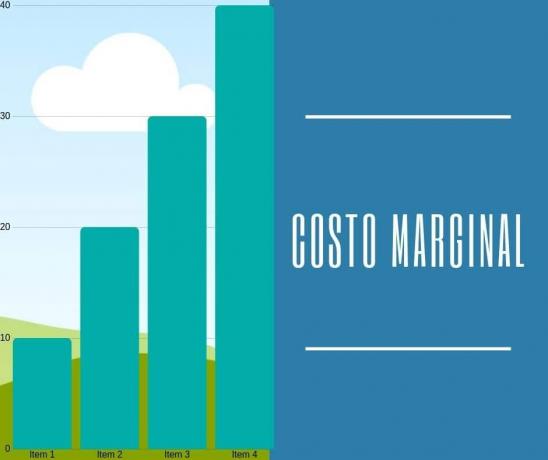Cost concepts, including marginal cost, are elementary in the theory microeconomic, as they are used to determine the prices of the products, the amount of production of the companies and the level of profits or utility, among others.
In economics and finance there are terms to which we constantly refer, but they can be very complex concepts and difficult to understand for those who are not related to the topic or the sector.
Advertisements
In this article you will find:
What is marginal cost?

The marginal cost is the variation in total cost when increasing production by one unit.
Advertisements
The marginal cost for each level of the production cycle contains the additional costs incurred to produce the next unit of output (variable costs).
For example, an automotive company produces at its maximum capacity and for the production of additional vehicle units needs a greater productive capacity of the plant, then the construction of a new factory would be necessary, so the marginal cost of the additional vehicles must include the cost of the new plant.
Advertisements
From the aforementioned, the concept of marginal cost as the additional cost that the company faces when expanding its production by one more unit of product.
This concept is essential in making decisions regarding prices and improving the productivity of companies.
Advertisements
How is it calculated?
Mathematically, the CM (marginal cost) is calculated as the derivative of the TC (total cost) with respect to Q (quantity). Everything expressed in the formula.
Marginal cost formula
CM = dCT / dQ
Advertisements
It is explained:
That the marginal cost is equal to the variation in cost, over the variation in the quantity produced.
Marginal cost curve
Marginal costs are usually reflected in a graph known as marginal cost curve, which shows how marginal costs rise at each level of production.
This curve generally has the shape of a concave parabola, which is due to the law of diminishing returns, showing the minimum point as the number of goods necessary to create to reach a minimum cost level. In addition, it allows the study of the cut-off point (the optimal level) with the average cost curve, where the company would obtain greater production and therefore greater profit.
Before applying the formula:
- Make a table with the summary of production costs and quantities produced.
- Distinguish well the fixed costs and the variables, everything productive process incurs various fixed and variable costs, for example, rent, labor are fixed costs, others such as cost of raw material and electrical energy can vary according to the quantities to be produced and are considered variable costs.
It is also possible to calculate the marginal cost with the use of a spreadsheet, electronic programs that facilitate the work.
Example
Suppose you run a small bakery venture and your current production of 100 loaves daily, you think it is time to grow and embrace as you sell those 100 loaves with total ease.
You plan to increase production to 150 loaves a day, you study the possibilities and understand that in order to meet this new goal, you need a new oven and a few additional trays.
Analyzing, we understand that the marginal cost of producing those 50 loaves will include the cost of purchasing the new oven and trays.
For any company, it is essential to calculate the marginal cost of the production of its goods and / or services, in order to avoid being suffocated between the multiple costs incurred and also facilitate the optimal calculation of the minimum number of units that can be produced daily to obtain the minimum profit or leave the balance at zero, that is, without losses and without Benefits.
On the other hand, it also serves to objectively calculate the final price of the product, so that production is profitable and the company does not lose money with the sale.
The ideal is to achieve the optimum point of production, that is, the point where the maximize profitsTherefore, it is necessary to bear in mind that producing more units does not always imply obtaining greater benefits, in addition to the increased risks that this increase entails.
Finally, it is necessary to clarify that an increase in production is always followed by a thorough study, which should show among its results the level of feasibility of the case according to the need that goes To cover.


